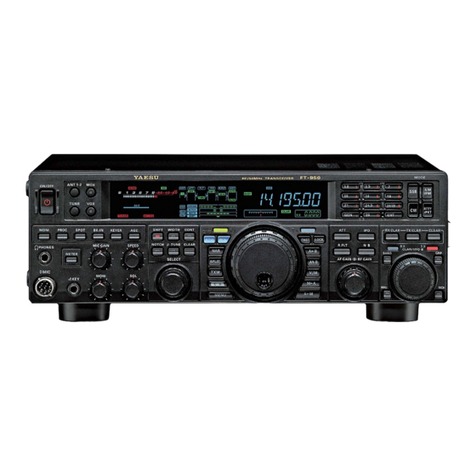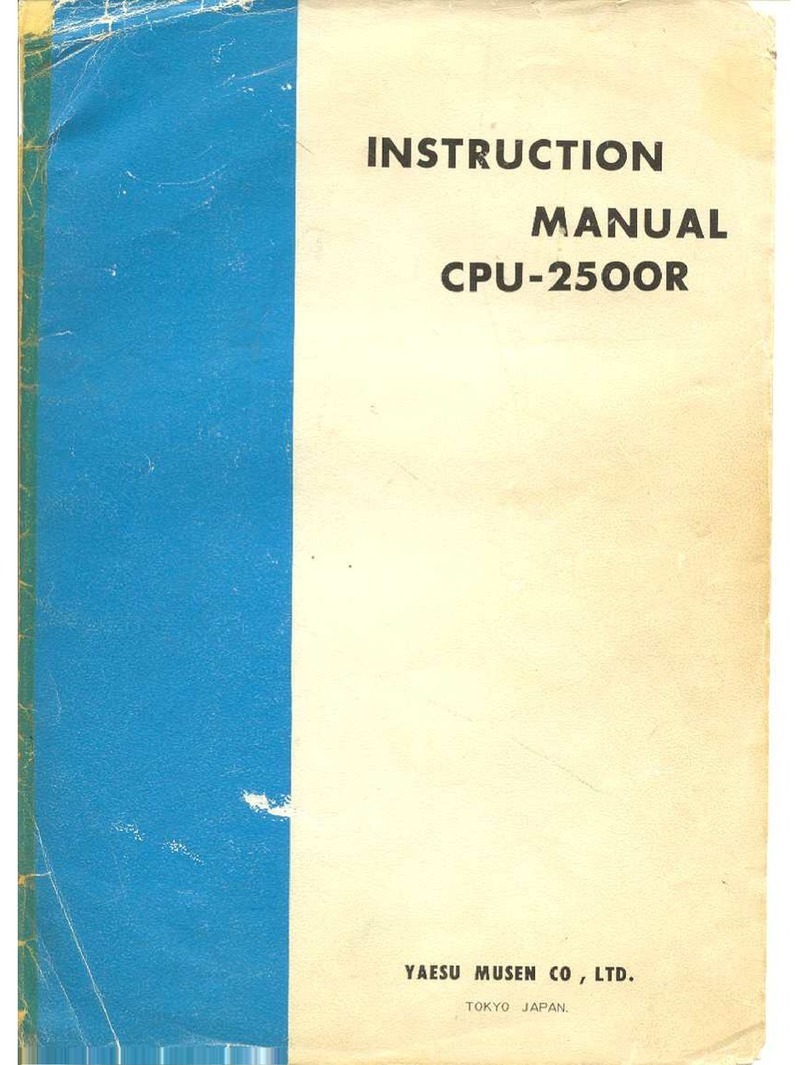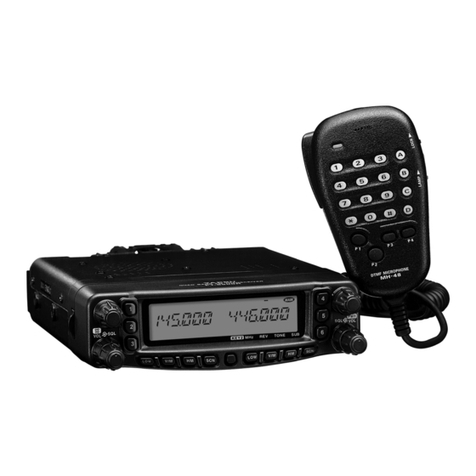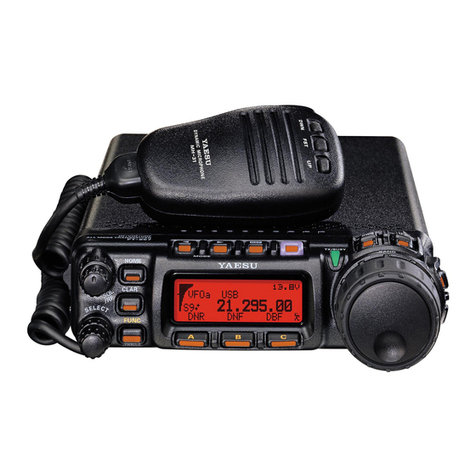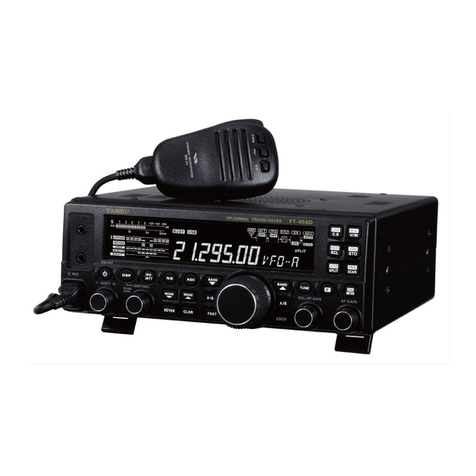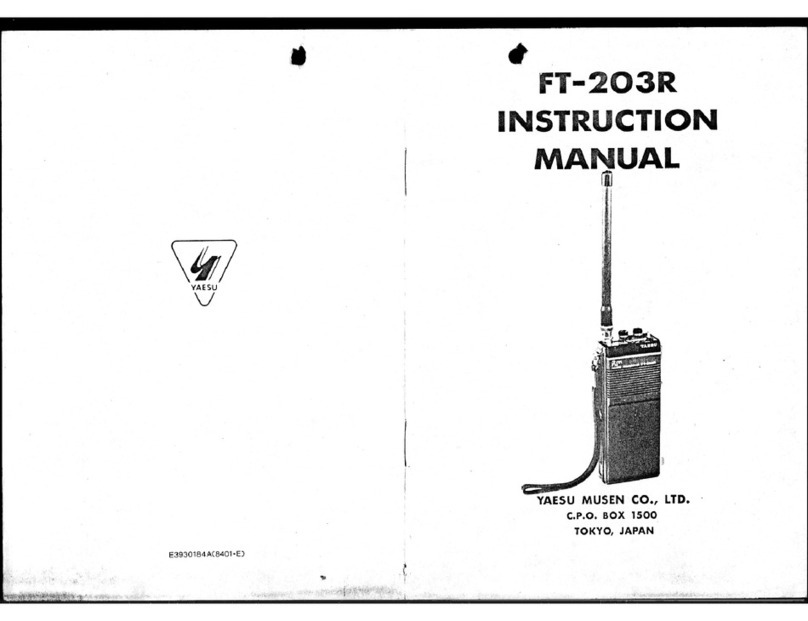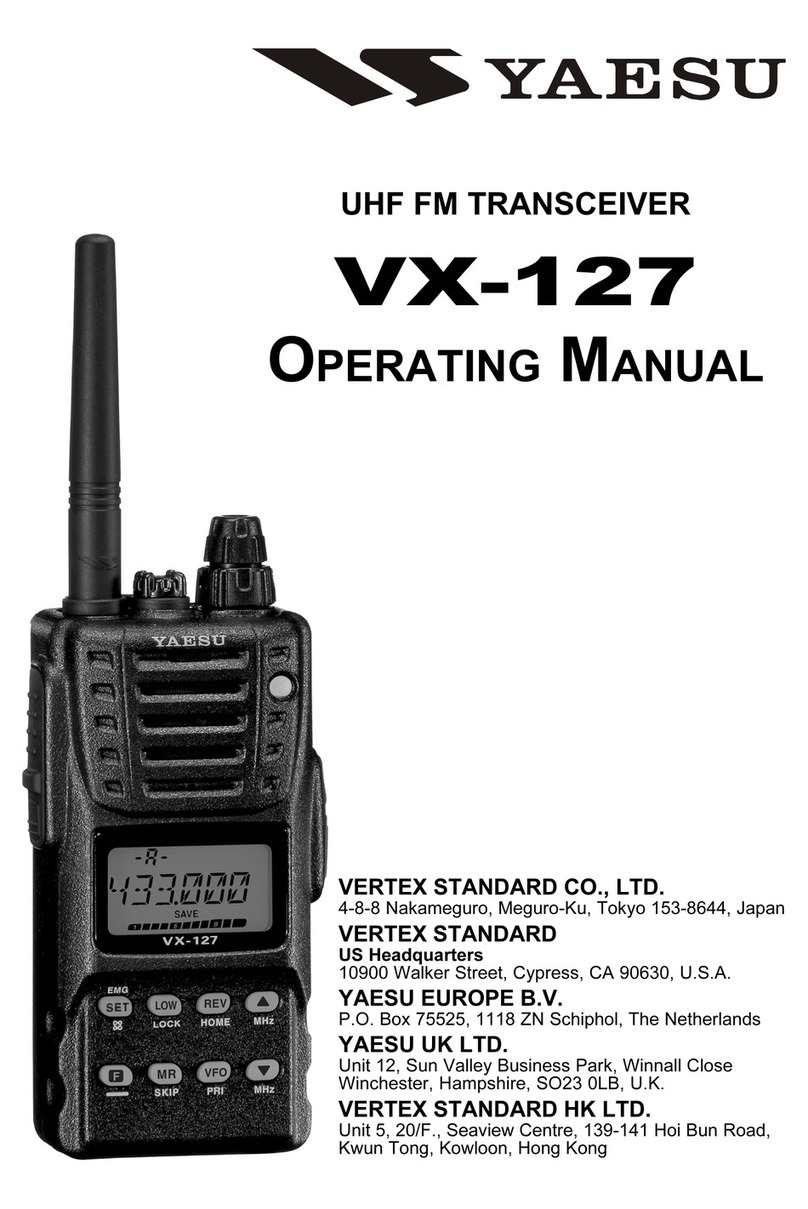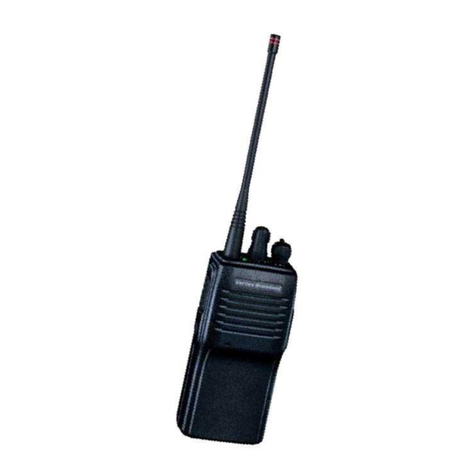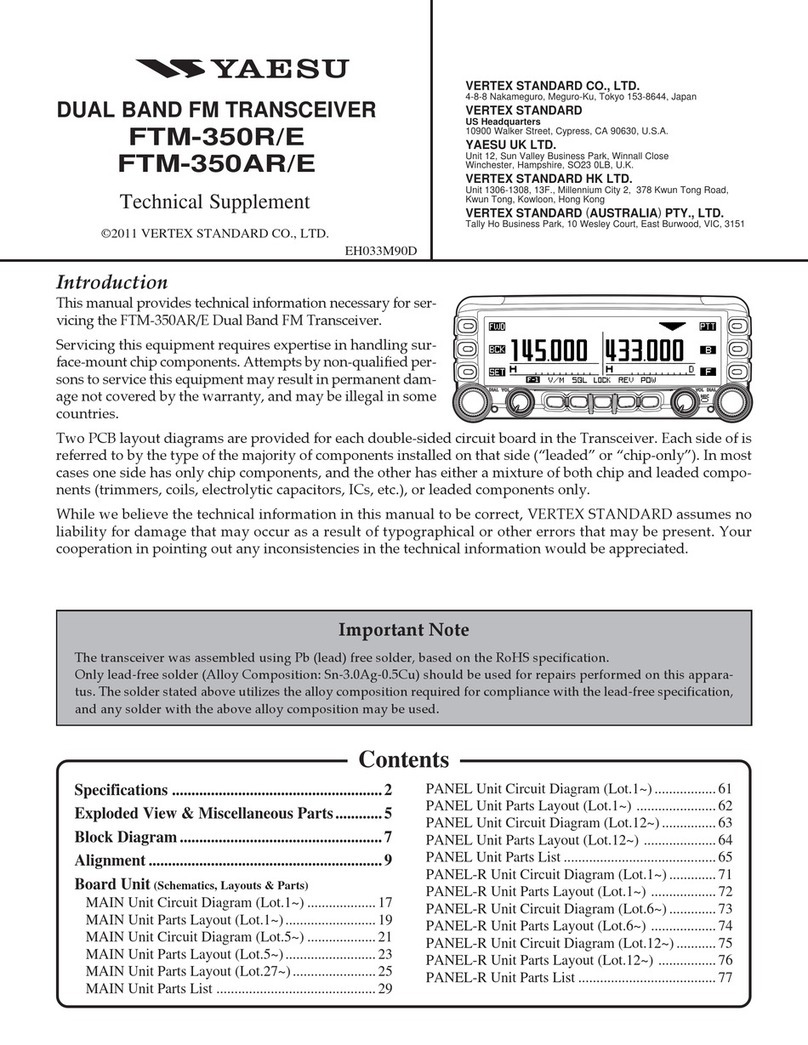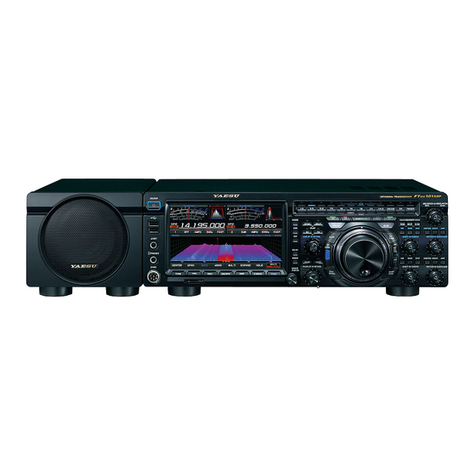
1
Using the APRS®Function
Table of Contents
Using the APRS®Function............................................................................................. 1
Initial Settings for APRS® ..........................................................................................................................................................................2
Initial Setup Procedure for APRS Operation................................................................. 2
Operating APRS using the GPS function...................................................................... 3
Operating APRS without using the GPS function. ........................................................ 3
Setting the Callsign of Your Station............................................................................... 5
Setting APRS baud rate................................................................................................ 7
Setting the Symbol of Your Station ............................................................................... 8
Receiving APRS®beacons............................................................................................. 10
Setting the operating frequency for APRS. ................................................................. 10
Receiving APRS®beacons ......................................................................................... 10
Description of APRS beacon screen and key operation. ............................................ 11
Notification of beacons or messages with a popup screen.
APRS POPUP Function.............................................................................................. 21
Screen when BND2s to BND60s is selected........................................................... 23
Notification of beacon or message reception with a ringer sound.
APRS RINGER Function ............................................................................................ 24
Displaying RAW packet data ...................................................................................... 25
Deleting beacon stations from the list......................................................................... 26
Transmitting the APRS®beacon..................................................................................... 26
Manually transmitting a beacon .................................................................................. 26
Switching between manual and automatic beacon transmission................................ 26
Set the automatic transmission interval for sending a beacon.................................... 27
Setting SmartBeaconing™.......................................................................................... 28
Status Text Register.................................................................................................... 29
Select a Position Comment......................................................................................... 31
Setting the Digipter Route........................................................................................... 32
APRS message screen and key operation..................................................................... 34
Description of APRS message screen and key operation .......................................... 34
Reception/Transmission Details Screen and Key Operation ...................................... 35
Message Editing Screen and Key Operation.............................................................. 36
Receiving Messages................................................................................................... 37
Receive message filter settings .................................................................................. 38
Deleting messages from the list.................................................................................. 39
Transmitting an APRS®Message ................................................................................... 40
Message creation and transmission ........................................................................... 40
APRS Set Mode List....................................................................................................... 45
APRS Set mode function list .......................................................................................... 49
